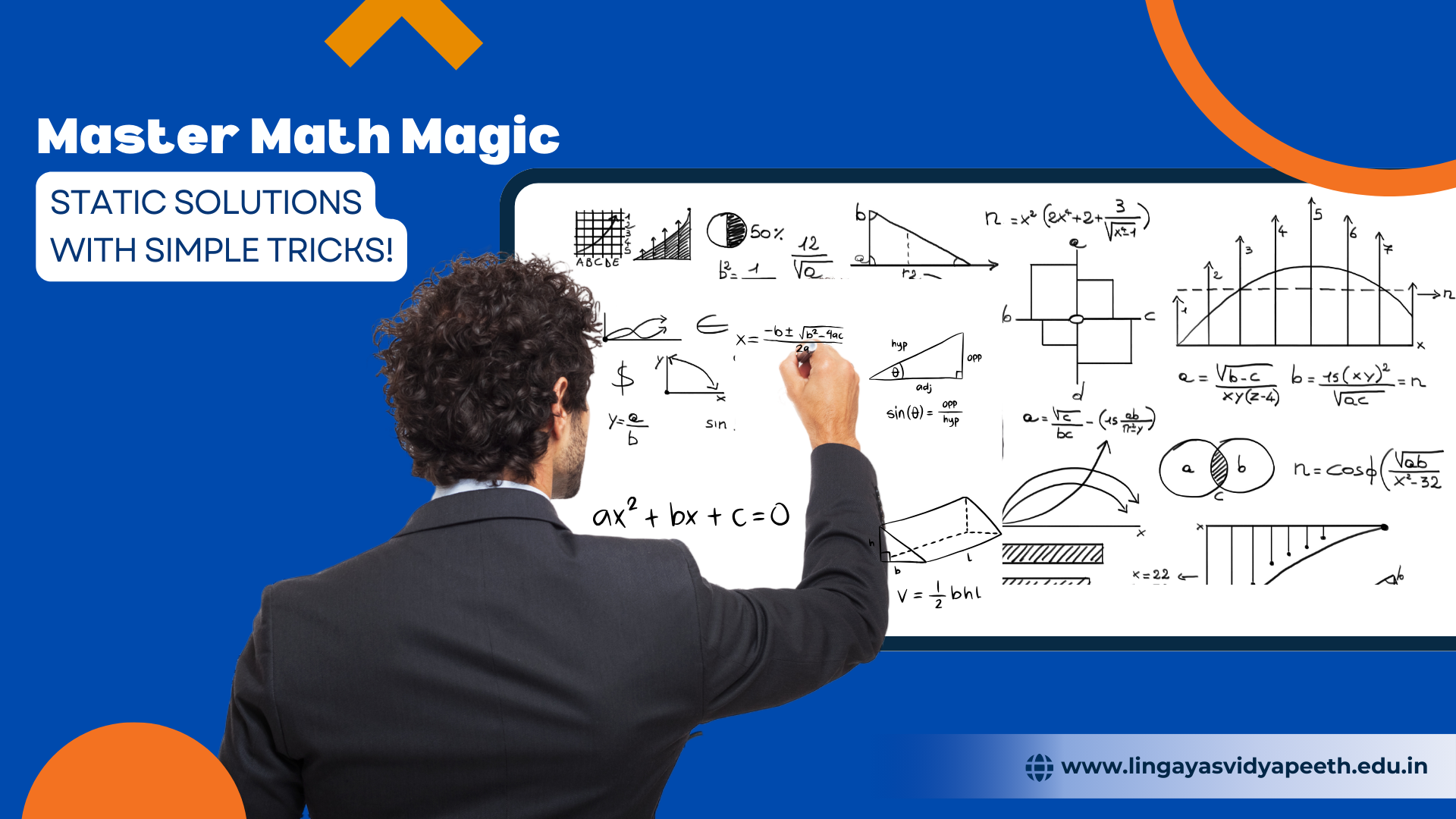Home » Math Tricks for Statistics: The Comprehensive Guide Every B.Sc Math Student Needs

Statistics, often seen as a daunting subject, can become much more manageable with the right tools and techniques. For B.Sc Math students, understanding these mathematical shortcuts can significantly enhance their problem-solving skills and overall performance.
Let’s explore some handy math tricks that can simplify statistical calculations and make learning more enjoyable.
A quick estimate of standard deviation can be obtained using the range rule of thumb. It states that the standard deviation is approximately equal to the range (the difference between the maximum and minimum values) divided by 4. This provides a rough idea of the data’s spread without the need for complex calculations.
Z-tables are crucial for finding probabilities associated with standard normal distributions. To use them efficiently, remember:
Geospatial Mathematics: A Symbiotic Relationship Between Mathematics and Geography
Understanding the properties of the normal distribution can simplify calculations. Key points to remember include:
Chebyshev’s inequality provides a lower bound for the proportion of data that lies within a certain number of standard deviations from the mean. It’s a useful tool when the exact distribution of the data is unknown.
The Central Limit Theorem is a cornerstone of statistics. It states that the distribution of sample means approaches a normal distribution as the sample size increases, regardless of the underlying population distribution. This theorem is essential for statistical inference.
While manual calculations are valuable for understanding concepts, modern c statistical software can streamline computations. Familiarize yourself with the functions available on your calculator and explore popular software like R, Python, or Excel.
As with any mathematical skill, practice is key. Work through various statistical problems, both theoretical and applied. The more you practice, the more comfortable you’ll become with the concepts and the faster you’ll be able to solve problems.
Mathematics Used in Artificial Intelligence
Creating visual representations of data, such as histograms, box plots, and scatter plots, can provide valuable insights into the distribution and relationships between variables. Visualization can help you identify patterns and anomalies that might not be apparent from numerical data alone.
When faced with a complex statistical problem, break it down into smaller, more manageable steps. This can help you stay organized and avoid getting overwhelmed.
Conclusion:
By incorporating these math tricks into your studies, you’ll be well-equipped to tackle the challenges of statistics and excel in your B.Sc Mathematics program. Remember, the key to success is not just memorizing formulas, but understanding the underlying concepts and applying them effectively.
Top Career Options for Mathematicians Outside Academia
Obtain a BSc in math from Lingaya’s Vidyapeeth for excellent academic brilliance, cutting-edge facilities, and hands-on learning opportunities. Get access to research opportunities, industry contacts, and personalized career counselling. Lingaya’s Vidyapeeth, the top-ranked & best university in Delhi NCR, equips you for success in mathematics and beyond. Apply today!
From
Ms. Priyavada
Assistant Professor
Department of Mathematics
Lingaya’s Vidyapeeth
Best Colleges in Delhi NCR for BSc Maths
RECENT POSTS
CATEGORIES
TAGS
Agriculture Agriculture future AI Architecture artificial intelligence Bachelor of Commerce BA English BA Psychology BTech AIML BTech CSE BTech cybersecurity BTech Engineering Business management career Career-Specific Education career guide career option career scope Civil engineering commerce and management Computer Science Computer science engineering Data science degree education Engineering Engineering students English Literature english program Fashion Design Fashion design course Higher Education Journalism journalism and mass communication law Law career Machine Learning mathematics MBA MBA specialization Mechanical Engineering Pharmacy Psychology Research and Development students
Nachauli, Jasana Road, Faridabad, Haryana
Address: C-72, Second Floor, Shivalik, Near Malviya Nagar,
Above HDFC Bank, New Delhi 110017
Landline No. - 011-46570515 / 45138169 / 41755703
Mobile No. - +91-7303152412 / +91-7303152420 / +91-9311321952
Toll Free: 1800-120-4613
Mobile : 8447744303 | 8447744304 | 8447744306 | 8447744309
8700003974 | 8700003411 | 8700003749
Copyrights © 1998 - 2026 Lingaya's Vidyapeeth (Deemed To Be University). All rights reserved.
LV only conducts physical/online verification of any document related to examination on the following email id:
It is important to note that the following email IDs and domains are fraudulent and do not belong to our university.